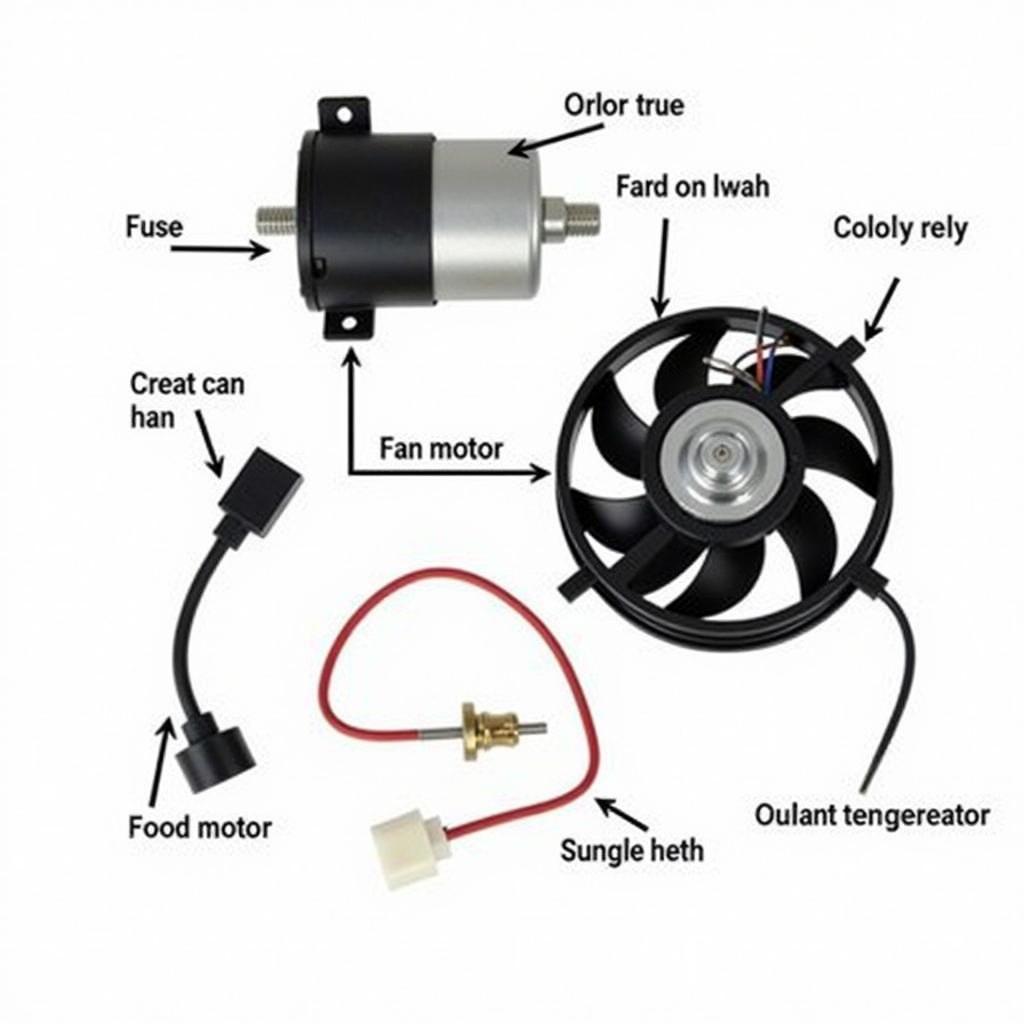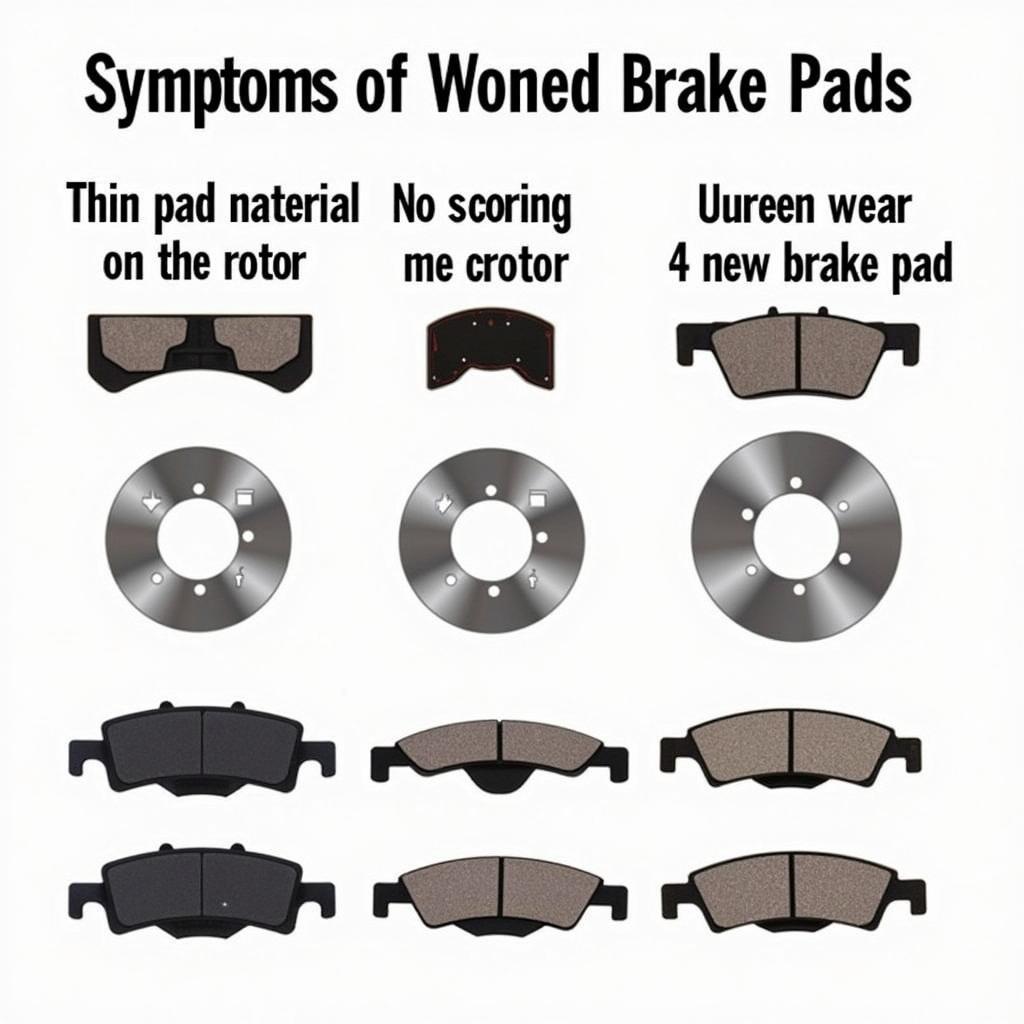Knowing how much to fix fans not switching in your car can feel like navigating a minefield. It’s a frustrating issue that can quickly lead to overheating and costly repairs if ignored. This article breaks down the costs associated with fixing car fan malfunctions, empowering you to understand the problem and make informed decisions.
Why Aren’t My Car Fans Working?
Several culprits can cause car fans to malfunction, ranging from simple fixes to more complex electrical issues. Before panicking, consider these possibilities:
- Blown Fuse: A blown fuse is often the easiest and cheapest fix. Check your car’s fuse box and replace any blown fuses related to the cooling fan circuit.
- Faulty Relay: Relays act as switches controlling the power to the fans. A faulty relay can prevent the fans from receiving power.
- Malfunctioning Fan Motor: The fan motor itself can wear out or seize up over time. This usually requires replacing the entire fan assembly.
- Coolant Temperature Sensor Issues: A faulty coolant temperature sensor can send incorrect readings to the car’s computer, preventing the fans from activating when needed.
- Wiring Problems: Damaged or corroded wiring can interrupt the electrical circuit, preventing the fans from receiving power.
- Control Module Failure: In some vehicles, a separate control module manages the cooling fan operation. A faulty module can lead to fan malfunctions.
 Car Cooling Fan Components
Car Cooling Fan Components
How Much Does it Cost to Fix Car Fans?
The cost to fix car fans not switching varies depending on the underlying cause, your car’s make and model, and labor rates in your area. Here’s a general breakdown:
Fuse Replacement:
This is the cheapest fix, typically costing just a few dollars for a replacement fuse. You can usually replace a fuse yourself, saving on labor costs.
Relay Replacement:
Replacing a relay is also relatively inexpensive, with relays typically costing between $10 and $30. Like fuses, you can often replace a relay yourself.
Fan Motor Replacement:
Replacing a fan motor is a more significant expense, ranging from $100 to $500 or more, depending on your car’s make and model. Labor costs will add another $50 to $150 to the total.
Coolant Temperature Sensor Replacement:
Replacing a coolant temperature sensor usually costs between $50 and $200, including parts and labor.
Wiring Repair:
Wiring repair costs can vary greatly depending on the extent of the damage. Simple repairs might only cost a few dollars, while more extensive wiring issues could cost hundreds of dollars.
Control Module Replacement:
Replacing a control module is typically the most expensive repair, ranging from $200 to $800 or more, including parts and labor.
Diagnosing the Problem: Where to Start?
Before taking your car to a mechanic, you can perform some basic troubleshooting to identify the potential cause.
- Check the Fuse: Locate your car’s fuse box (usually under the dash or in the engine compartment) and consult your owner’s manual to identify the cooling fan fuse. Inspect the fuse for any breaks or signs of damage.
- Inspect the Relay: Relays are often located near the fuse box. Try swapping the cooling fan relay with a similar relay from another circuit. If the fans start working, you’ve found the culprit.
- Listen for the Fan: With the engine running and the AC on, listen for the fan. If you don’t hear it running, it could indicate a problem with the fan motor itself.
“Start with the simplest and least expensive checks first. A blown fuse is a common culprit and an easy DIY fix.” – John Smith, Automotive Electrical Systems Engineer
How Much to Fix Fans Not Switching in Car: Frequently Asked Questions
Q: Can I drive my car if the fans aren’t working?
A: No, driving with malfunctioning cooling fans can quickly lead to overheating, causing serious engine damage. Get the issue addressed immediately.
Q: How can I prevent fan problems in the future?
A: Regular maintenance, including coolant flushes and inspections of the cooling system components, can help prevent fan problems.
Q: Do both fans need to work?
A: Most cars have two cooling fans, and both should operate when needed. If only one fan is working, it’s important to get the issue diagnosed and repaired.
In Conclusion
Understanding “How Much To Fix Fans Not Switching In Car” depends largely on the diagnostic process. While a simple fuse replacement can be a quick and inexpensive fix, more complex issues like a faulty control module can be significantly more costly. Don’t let the fear of the unknown keep you from addressing this vital issue. Start with simple checks and, if needed, consult a qualified mechanic for a thorough diagnosis and repair.
Need expert advice? Connect with AutoTipPro at +1 (641) 206-8880 or visit our office at 500 N St Mary’s St, San Antonio, TX 78205, United States.






Leave a Reply